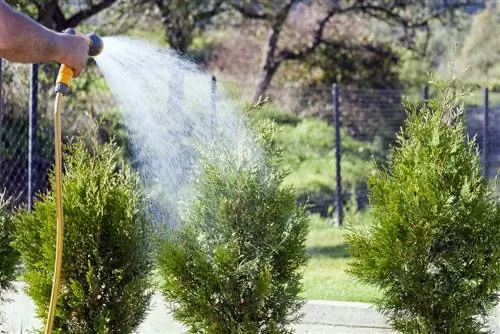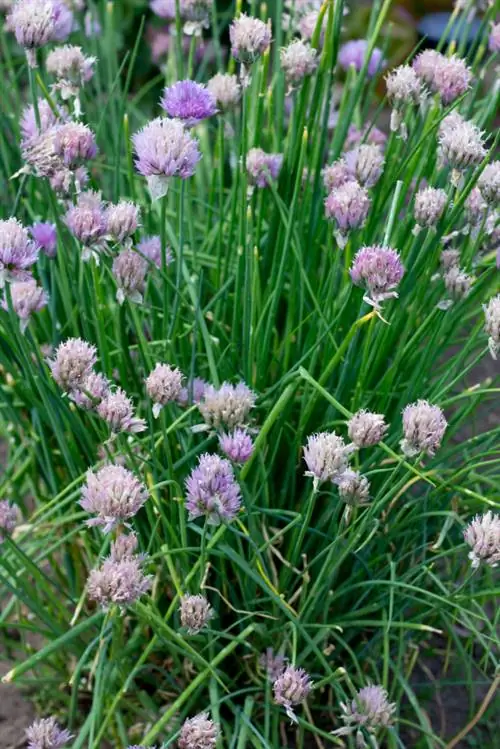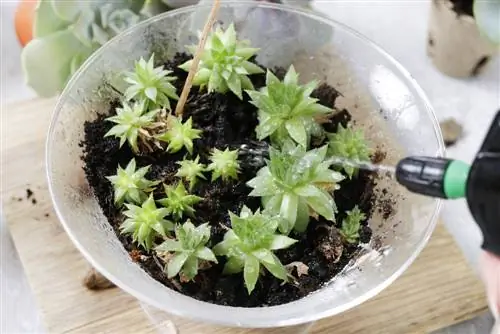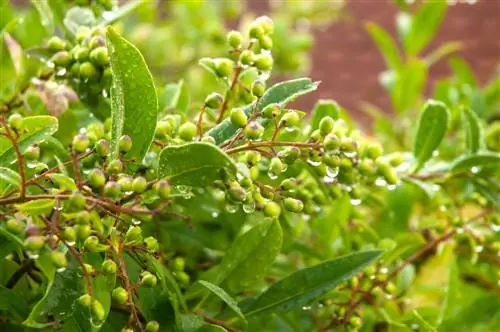- Author admin [email protected].
- Public 2023-12-16 16:46.
- Last modified 2025-01-23 11:21.
The tree of life or thuja is one of the most popular trees in the garden. The Western arborvitae (Thuja occidentalis) in particular is often used as a robust and easy-care hedge plant. Although older thuja and those that have established themselves in their location are relatively tolerant of drought, young and freshly planted specimens in particular should be regularly supplied with moisture.
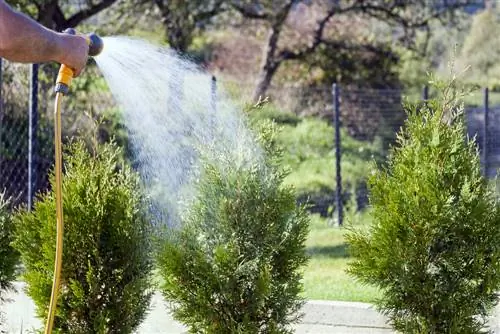
How should thuja be watered correctly?
Answer: Freshly planted thuja should be watered every other day for the first two weeks, then every third or fourth day thereafter. After six months, no additional watering is necessary, except in very dry periods. It is best to use rainwater and water in the early morning hours.
Keep freshly planted thuja moist
When freshly planted thuja die or suddenly turn brown leaves, dryness is often the cause. In the first two weeks after planting, you should water the young arborvitae about every other day so that the soil is moist - but definitely not wet! Too much moisture leads to waterlogging, which the trees cannot tolerate. In the third and fourth weeks after planting, water about every third or fourth day, and then only once a week. Exception: The weather is very hot and dry, so you have to use the watering can twice a week. After about six months, the trees have grown and, apart from very dry phases, no longer need any additional watering.
Planting thuja in moist soil
It is best to plant your Thuja in slightly moist, but not wet soil: both dryness and constant wetness lead to the death of the plants. In order to keep moisture loss as low as possible, you should also install an additional windbreak for the first few weeks in windy locations - after all, Thuja is often used as a windbreak. This also ensures that the trees are more stable until they have fully grown.
Tips for watering thuja correctly
The following tips will help keep your thuja plantings he althy and adequately hydrated:
- If possible, water the plants in the early morning hours.
- Watering at lunchtime should be avoided.
- The reasons are the so-called burning glass effect and increased evaporation.
- Watering in the evening is also suboptimal, as this promotes mold growth.
- Do not water the thuja with cold water.
- Rainwater collected in tons is optimal.
- Water only the soil, never the leaves: this encourages fungal diseases.
Tip
Bead or drip hoses are suitable for automatic irrigation.

